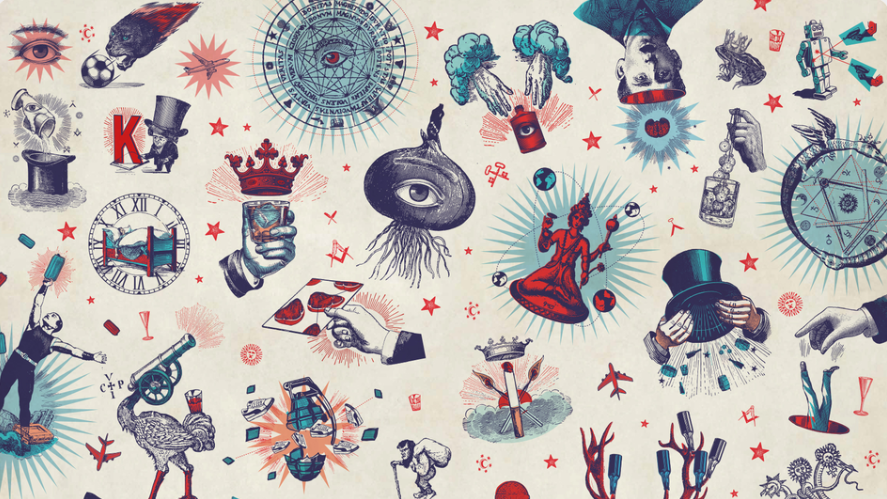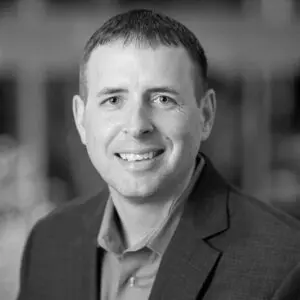SXSW 2023: Takeaways for Healthcare Brands
Contributing authors: Bridget Beniest, Emily Kubis, Stephanie Wierwille
The BPD team just landed from SXSW 2023, where tech, healthcare, marketing, and culture converge. This year’s South By had the kind of energy that the early days of the Internet did—with excitement, buzz, and caution. From generative AI and ChatGPT, to SVB’s shaking the health tech industry, to cultural shifts that move at the speed of TikTok—we’ve officially crossed into a new era.
Read on for our recap of the five major trends and takeaways we’re bringing back from Austin – and we promise ChatGPT was not consulted in the writing of this article.

1. The Pace of Innovation is Accelerating
We heard it every day, everywhere. From vaccines, therapeutics, and clinical trials, to software, hardware, devices, and data—the fun’s only just begun. We’re arguably in a golden age of innovation, where the rate of advancement is exponential. With a foot on the gas pedal and a wide-open road post-pandemic, foundational industries like finance, healthcare, marketing and media are being utterly remade. For example, in February, ChatGPT reached 100M active monthly users, making it the fastest-growing consumer application in history. It’s been adopted by Google, Microsoft, Salesforce, and thousands of other companies. Tech acceleration puts healthcare organizations on the defense more than ever. Consider data shared by Dr. Yauheni Solad, VP of Innovation at UC Davis Health: the rate of tech adoption among healthcare institutions dramatically trails that of patients.
We can market healthcare services all day, but with outdated tech, consumers will seek instant answers elsewhere.
2. Storytelling Matters Now More than Ever
In a world of instant answers, stories make sense of endless information.
Chef and humanitarian José Andrés’ powerful keynote about storytelling was a flavorful experience (pun intended). He shared stories passed down from recipes that translate to culture and community. He told tear-jerking stories about Hurricane Katrina, Haiti, the earthquake in Turkey, and his current work Ukraine. His compassion rallies others to run towards tragedy—which is exactly what healthcare needs.

How many times have healthcare marketers created patient stories, but struggled to really get to the heart of patient emotions? In a panel called ‘Closing the Attainment Gap with Inclusive Design,’ it was lamented that patients are still clinical profiles, not people. Imagine if healthcare marketers’ roles included weekly 1:1s with patients, ride-alongs with physicians, and in-home sit-downs with older adults with chronic conditions.
Every piece of content has the power to connect, change a behavior, and save lives.
3. Physicians are Experiencing a Dethroning
While physicians held plenty of speaking roles and shared critical insights and advancements, there was a palpable tension between those doing the disrupting and those being disrupted.
In a conversation about solving the global healthcare crisis, Adrian Aoun of primary care startup Forward bemoaned the fact that the entire system is built on doctors who are too expensive and in short supply. By many patients, they’re seen as unempathetic and unwilling to listen. Increasingly, physicians are seen as part of the problem.
On the contrary, physicians are frustrated that startups believe that tech alone will solve healthcare’s problems. In a panel about the future of healthcare, one panelist stated that consumers now can become more informed than physicians—which led to audible disagreement among physicians in the audience. The tension is mounting, and it goes beyond a workforce issue. For physicians, it’s an identity crisis.
In a panel about the misinformation crisis, Vineet Arora, Dean for Medical Education & Academic Hospitalist at the University of Chicago shared that when physicians publish vaccine facts in social media, they’re met with bullying and death threats, and no one is protecting them. The vitriol clinicians experience today stands in direct contradiction with their long-standing role in society. The dethroning of physicians is an extremely dangerous dynamic, not just for health systems and clinicians, but for the future of health in America.
“When physicians publish vaccine facts in social media, they are met with bullying and death threats—and no one is protecting them.”
Vineet Arora, Dean for Medical Education & Academic Hospitalist at the University of Chicago
4. The Hospital Exodus Continues
‘Traditional’ health systems are looking for nontraditional ways to create value—exploring venture capital and a portfolio of other economic models, while the pandemic and provider shortages forced a rethinking of the value of 24/7 hospital care entirely.
Dr. Bon Ku, Associate Dean for Health and Design at Thomas Jefferson University and Emergency Physician noted that “in the future, hospitals will shrink down to focus solely on ERs, ICUs, and operating rooms—everything else will be done in the home.” While this is a trend we’ve been discussing for a while (cue promotion for BPD’s Joe Public 2030 book), it hits you right between the eyes when a physician says it out loud.
If the industry can’t remake itself fast enough, provider shortages plaguing rural/underserved areas are coming for everyone—sooner than we’d like to think.
“In the future, hospitals will shrink down to focus solely on ERs, ICUs, and operating rooms—everything else will be done in the home.”
Dr. Bon Ku, Associate Dean for Health & Design at Thomas Jefferson University
5. Generative AI is Here to Stay
As Amy Webb boldly stated in her annual Tech Trends talk, “The Internet is dead. Welcome to the era of assisted computing.” ChatGPT was everywhere at SXSW. It even served as a panelist itself in a session on chatbots and healthcare transformation. (This was, admittedly, pretty cool.) But ‘garbage in, garbage out’ is the name of the generative AI game, so misinformation and bias are rampant. But for the traditionalists out there—the stalwarts believing AI can never replace a doctor—consider the work of Sonavi Labs and its smart stethoscope, the Feelix, which detects and identifies respiratory abnormalities in seconds. With clinician burnout still dangerously high, the future could be sooner than you think.
For a deeper look at Generative AI, check out a BPDr’s recent LinkedIn Article.
“The Internet is dead. Welcome to the era of assisted computing.”
Amy Webb, CEO Future Today Institute
The Way Forward – Be Fearless, Be Bold
In this brave new world, being bold is the only way to stand out. Your brand must be distinctive and forward-thinking, rich with personality and feeling. People make decisions on emotion—yes, even healthcare decisions. Especially healthcare decisions.
Steven Grasse’s “Brand Mysticism: How are Viral Brands Created?” talk was all about creating brands that are beguiling—mystical even!—with multiple layers. Sound too wild for healthcare?
With many big brands—health systems included—when you peel back the top layer, there’s nothing underneath. A layered approach creates a give and take with your audience, and paves a way to invite the audience on a journey, an opportunity to see your hospital, health system, startup, or Fortune 500 company—in a different, exciting way.
There’s no way around it. A new era is upon us. Ready to take a bold step into the future? Reach out.



